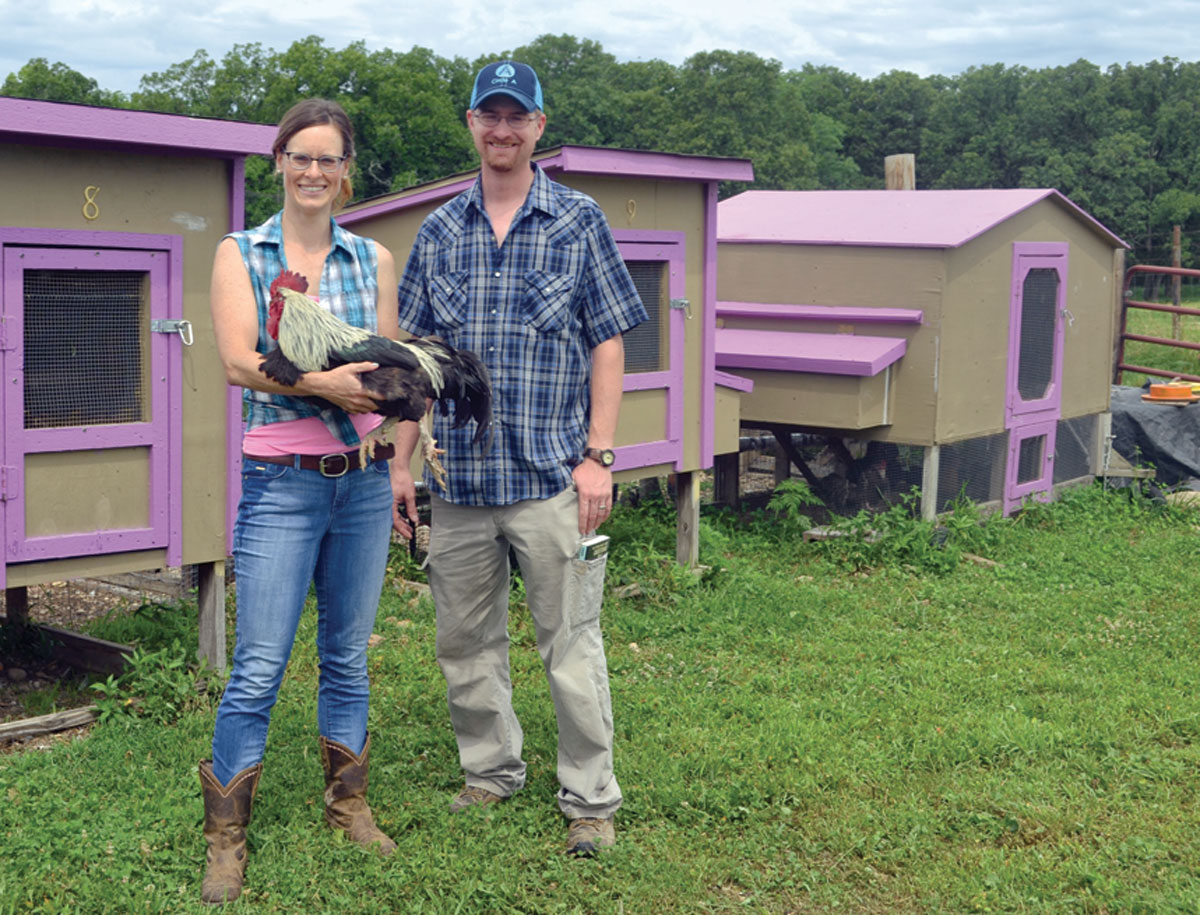
Most of the time when farmers buy a new base farm, many buildings need excessive refurbishing, pastures need re-fencing and facilities need to be reorganized even if they are all in good shape in order to meet the needs of the new owners. Lori and Wess Peterson of Neosho, Mo., had no such problem when they purchased a 25-acre facility previously owned by a retired veterinarian who often did long-term care.
After surviving an F4 tornado and rebuilding, the couple decided to move their show Boer goat operation, Show Me Boers, to that site south of Neosho. The facility is perfect for their needs because the entire acreage is laid out so that all pastures lead to the central facility and pens. This allows all animals direct access to the main buildings for individualized care.
The Petersons have added more barns and buildings for shade.
Lori said, “The house could’ve been a teepee, and we still would have bought it. I will never move the farm again.”
The Peterson herd consists of 100 head of Boer goats and 60 recipient females does, which are mixed dairy breeds. The Nubians goats are especially heavy milkers producing as much as 2 gallons a day making milking necessary even if the doe has twins. All extra milk is stockpiled in the freezer to feed bottle babies. The Petersons also have a dairy cow to supplement milk.
Breeding is very carefully controlled. A goat’s heat cycle is only 18 hours long and a buck may need to service as many as six does in a day, which is too many for good semen count. In order to ensure conception, semen is collected and stored with an extender fluid. It is then splashed against the cervix of each doe every six hours. Then the doe also gets live coverage from the same buck. Embryo flushing takes place two days in the spring and three days in the fall. Two embryos are implanted in each recip. The Peterson process and attention to detail have raised the conception rate from 50 percent to 85 to 90 percent. Any surplus embryos are frozen for later use.
The Peterson program is highly successful. “We run the high-end of the breeding stock spectrum and sell even in Canada and Mexico.” One Canadian breeder bought two Boer bucks, one of which won Canadian National Champion twice, with his son also winning another year. The same buyer bought another buck and won again this year.
Wess works for the Associated Wholesaler Grocers Co-op as a produce specialist and consultant for retailers, which means he is gone much of the time. His main contribution to their operation is working out a breeding program with an emphasis on pedigree rather than phenotype. Through research, he devises a constantly evolving program by crossing lines that work well with each other. One recently purchased buck came with an eccentric preference for Cheez-Its, and eccentricity the Petersons are happy to indulge. Lori said, “We spoil him rotten, but he’s worth it and produces superior offspring.”
The newest Peterson venture is a small but growing Dorper sheep herd. Lori said, “The sheep are our plan for retirement because caring for sheep is much less labor intensive than caring for goats. On the other hand, they’re not nearly as fun because they have no personality. For now, we will focus on our goats.”







